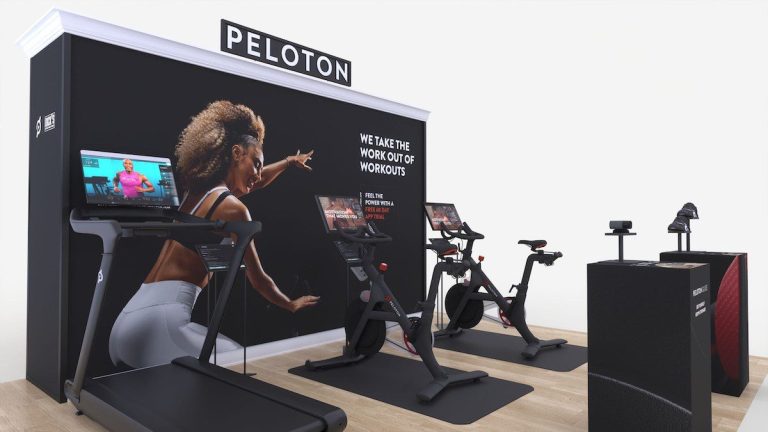Peloton Goes Instore With Dick’s Sporting Goods

In a pre-holiday push aimed at boosting sales, membership and subscribers, Peloton announced Thursday (Sept 29) that it was launching 100 branded store-in-store locations in what it called an exclusive retail and online partnership with Dick’s Sporting Goods.
While no firm launch date has been revealed yet, the beleaguered New York-based connected fitness firm said the new physical retail presence would be online “early in the holiday season,” calling the pact the latest effort to bring its hardware to new audiences with the help of the largest U.S. sporting goods retailer.
“This partnership is a natural fit for our brand and our Member acquisition goals,” Peloton SVP of Global Direct Sales Jen Parker said in the press release, while pointing to the incremental customer base and broader audiences it could reach through Dick’s stores and website.
“Retail remains a critical touchpoint, and we want to provide the in-store experience that many current and prospective Members still covet,” she added.
Counting Steps
The expansion into physical retail marks the latest move in a string of steps the Peloton has unveiled this year as the brand has taken on new leadership and completely revamped its manufacturing and delivery aspects of its business to simplify and accelerate the process of getting a $3,000 bike or treadmill into a consumer’s home.
The Dick’s announcement today marks at least the third new initiative launched by Peloton in the past month, after it announced last week that it was expanding its partnership with United Healthcare that will offer the 10 million members of the nation’s largest health insurer a mix of fitness tools and discounts.
Prior to that, Peloton announced in late August that it had struck a deal with Amazon to sell its bulky fitness hardware and other workout gear via a branded store on the eCommerce giant’s platform, a move that Peloton Chief Commercial Officer Kevin Cornils called “a natural extension of our business and an organic way to increase access to our brand.”
Will It Work?
So far, investors have been leery of Peloton’s changes, with the stock down 10% in early trading Thursday after the Dick’s announcement, while extending its year to date loss to 80%.
As PYMNTS reported in the wake of the company’s fiscal fourth-quarter earnings report that was released Aug. 25, Peloton’s biggest problem is not related to its hardware, but rather to its software and the need to get more people to subscribe to access its digital stable of workout routines.
To that point, new CEO Barry McCarthy told analysts that the company was unveiling a three-tiered, “good, better, best” pricing strategy as well as used gear sales to ease access to the company’s products which have historically skewed toward affluent users.
While noting that roughly half of its paying customers were already using Peloton’s workout app on other manufacturers equipment, McCarthy was unbothered by that reality, and in fact, saw it as an opportunity to grow the franchise.
“I would be delighted for you to use our content on somebody else’s hardware that you’ve already purchased,” he said, calling it a big opportunity for monetization and a way to grow TAM (total addressable market).
“This is not a substitute for our own retail strategy. This is a recognition that we need to be where our customers are,” McCarthy added, whether that’s in-store, at its own website or via 500,000 monthly “Peloton” searches it gets on Amazon. “There’s an opportunity to sell there and other retail formats as well.”
For all PYMNTS retail coverage, subscribe to the daily Retail Newsletter.